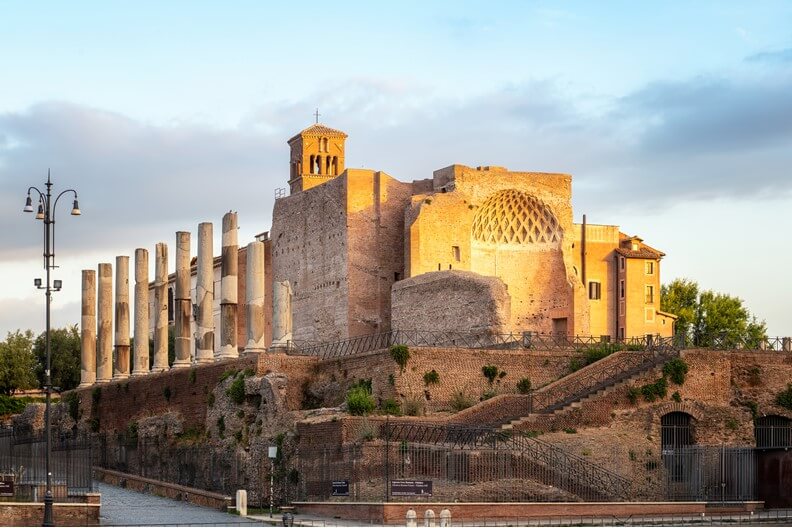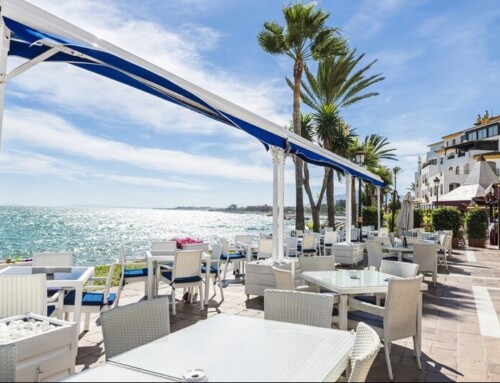Rome, Italy is one of those rare places that has something to offer visitors in virtually every area: history, art, culture and architecture. Among its many iconic attractions, Rome has:
- Over 400 monumental fountains. (1)
- More than 900 sacred monuments. (1)
- 574 archeological areas. (1)
- A museum dedicated solely to pasta. (2) Yes, Rome takes its world-famous pasta that seriously.
There are so many amazing experiences to enjoy in the capital of Italy, it would theoretically take years to tackle them all. Fortunately, this guide makes it easy, by outlining some of the very best attractions that Rome has to offer.
STAND ON THE MYTHICAL BIRTHPLACE OF THE ETERNAL CITY
Palatine Hill is a must-see place for two reasons. First, it stands out as one of the most significant historical sites as one of the seven hills of Rome. Second, it is regarded as the mythical birthplace of the Eternal City. (3)
Other distinctions include once being a sought-after address for the rich and famous of Rome, and a fashionable residential district. The historic rulers and aristocrats of the city chose Palatine Hill as the location for their opulent palaces and villas. As a result, today, this hidden gem offers visitors a wealth of striking architecture in a quiet setting.
GAZE UP AT A SOARING TRIBUTE TO VICTORY
Trajan’s Column owes its origins to the Roman emperor of the same name, who ordered the construction of a 131-foot column encircled with a decorative frieze of bas-reliefs to commemorate his two victories over the Dacians. The flourishes are 623-feet long and wind around the column 25 times. Trajan’s Column was erected in AD 113. (3)
While the statue at the top was once modeled after Trajan, it was replaced by one of St. Peter. The second statue was commissioned by Pope Sixtus in 1587. However, the soaring marble column still bears Trajan’s name, as does the market that sits adjacent to it.
At one time, Trajan’s Market was considered one of the wonders of the Classical World. It still holds its place as an excellent example of Roman urban architecture. (3)
FEEL THE THRILL OF PAST GLADIATOR BATTLES AND CHARIOT RACES
During its heyday, Circus Maximus accommodated 250,000 spectators of gladiator battles, horse and chariot races, and other athletic contests. In a nod to the swanky upscale accommodations at modern stadiums, the emperor had a richly appointed luxury box situated on Palatine Hill to provide a sweeping view. (3)
Circus Maximus was built around the 6th century BC by the order of Rome’s first Etruscan king, Lucius Tarquinius Priscus. It is nestled in the valley between Palatine and Aventine hills. The historic arena hosted its final sporting events in AD 549. (3)
WALK THROUGH A COMPLEX ONCE HERALDED AS THE WORLD’S MOST MAGNIFICENT
It is architectural standouts like Domus Aurea that helped Rome earn its place among the greats. The sprawling, downright palatial complex was comprised of multiple banqueting rooms, thermal baths, woods, gardens, pastures, vineyards and an artificial lake. At 123 acres, Domus Aurea was 25 times larger than the legendary Colosseum. (3)
Emperor Nero, infamous for his excesses, had the complex built in the Oppian Hill area around AD 64. “Domus Aurea” translates to “Nero’s Golden House,” a fitting name for the ostentatious complex. It hardly seems surprising that Domus Aurea was once heralded as the world’s most magnificent structure.
CONNECT WITH ARTISTIC SENSIBILITIES AT THE OLDEST ROMAN THEATER IN EXISTENCE
Romans immersed themselves in the arts at the Theater of Marcellus, which could accommodate around 20,000 people. Theatergoers could take their pick of the many musical recitals, plays, poetry recitals, and other cultural events that took place within its storied walls. (3)
As the largest and most important theater in Ancient Rome, this must-see site exerted strong architectural influence, as well. Theater of Marcellus created the blueprint for iconic buildings like the Colosseum. (3)
Julius Caesar began construction on the Theater of Marcellus, but he was assassinated in 44 BC before its completion. (3) The theater was named after a favored nephew of Emperor Augustus, who finished construction of the structure in 13 BC.
While visitors can only view the theater from the outside, it is well worth the time spent. After all, the striking semicircular travertine facade inspired the style of many of Rome’s other architectural gems.
SURROUND YOURSELF WITH HISTORICALLY SIGNIFICANT ANTIQUITIES IN THE HUB OF THE ANCIENT ROME EMPIRE
Symbolizing the zenith of Ancient Rome’s power and glory, the Roman Forum was once the social, commercial and political hub of the Roman Empire. Historically significant landmarks like the Basilica of Maxentius, Arch of Septimius Severus and Temple of Saturn remain standing in good condition. These world-famous structures were witnesses to events like business dealings, public speeches, elections, triumphal celebrations, gladiatorial contests and triumphal celebrations.
While some of the buildings have been reduced to rubble with the passing years, exploring the Roman Empire offers visitors the chance to surround themselves with antiquities that tell the story of one of the world’s legendary empires. (3)
GET AN IN-PERSON LOOK AT THE ORNATE DETAILS ON THE LAST GREAT MONUMENT OF IMPERIAL ROME
Let it never be said that the Arch of Constantine is a shrinking violet. The last great monument of Imperial Rome boasts a wealth of ornate details that include statues, reliefs and medallions. These flourishes are not just stunning, but they also have different backstories, with many plundered from structures that stood in earlier periods of time. Standing over 68 feet tall and 85 feet in width, the monument stands out among even its most imposing neighbors, the Roman Forum and the Colosseum.
The Arch of Constantine is aptly named, as it was erected as a tribute to Emperor Constantine’s victory over his co-emperor Maxentius at the Milvian Bridge in AD 312.
STROLL THROUGH ONE OF THE BEST-PRESERVED ANCIENT ROMAN CITIES
One of the draws that sites like the Roman Forum lack is the ability to provide solid insight into the everyday lives of ancient Romans. Fortunately, visitors have Ostia Antica, which was the empire’s main commercial port and military base for eight centuries starting around the 4th century BC.
Ostia Antica was hidden beneath windblown sand and tidal mud until it was meticulously excavated at the beginning of the 20th century. In fact, it is one of the best-preserved cities of Ancient Rome, with cobbled streets and many structures still intact. There is a good chance that visitors might feel like they can see and hear the 100,000 inhabitants who made their home here and frequented the business complex, theater, baths, and temples at their disposal. The aristocratic class also called Ostia Antica home, as evidenced by sumptuous patrician houses located within the city walls.
Less foot traffic and a comparably quiet scene are other benefits offered by Ostia Antica. While the site is just as impressive as Pompeii, it is less well-known. In this sense, the city could reasonably be considered a hidden gem.
Rome offers no shortage of attractions for even the most seasoned visitor. Whether your attendees want to stick to the beaten path or discover hidden gems, they will find something to tickle their fancy in the Eternal City. Consider the list of historic attractions above a solid starting point for a group destination trip to Rome. These beautiful sites have been carefully vetted to set your group trip up for success. (3)
Are you considering a travel incentive program to Rome? Contact Gavel International to help you plan an itinerary that maximizes your budget and results in raving reviews from attendees.
_______________________
SOURCE(S):
1 https://historicboston.org/how-is-rome-paying-for-its-preservation-projects/
2 https://worldstrides.com/blog/2016/10/12-interesting-facts-about-rome/
3 https://www.nomadepicureans.com/europe/italy/historical-sites-rome/
This article was last updated on September 19, 2023
- 6 Ways to Demonstrate That You Are a Contemporary Leader - July 14, 2025
- Why Hustle Culture Can Harm Sales Success – and How to Repair the Damage - June 30, 2025
- Enhance Sales Through Team-Friendly Storytelling - May 5, 2025






